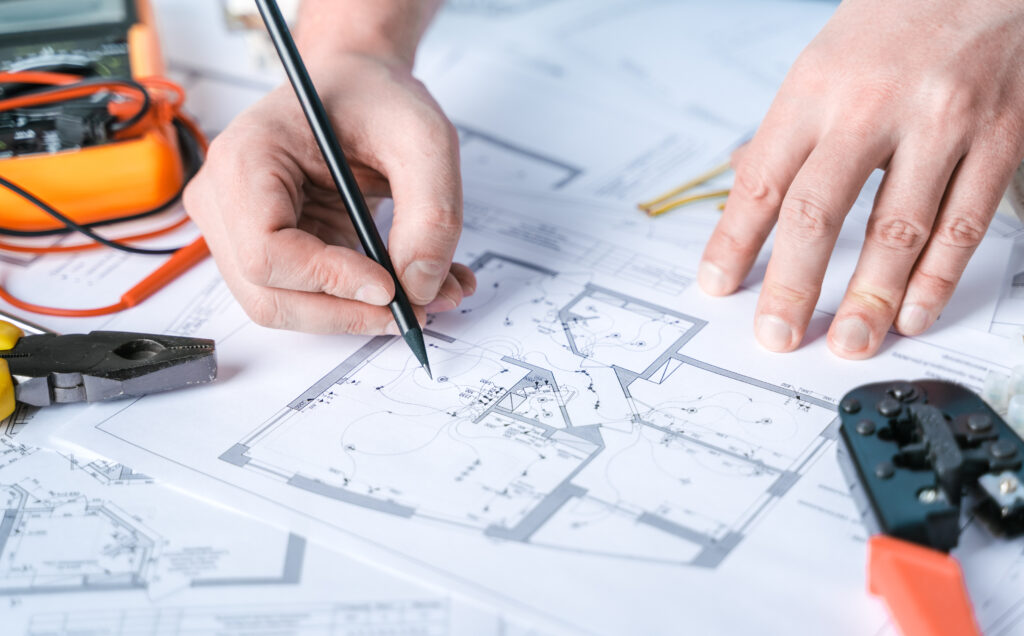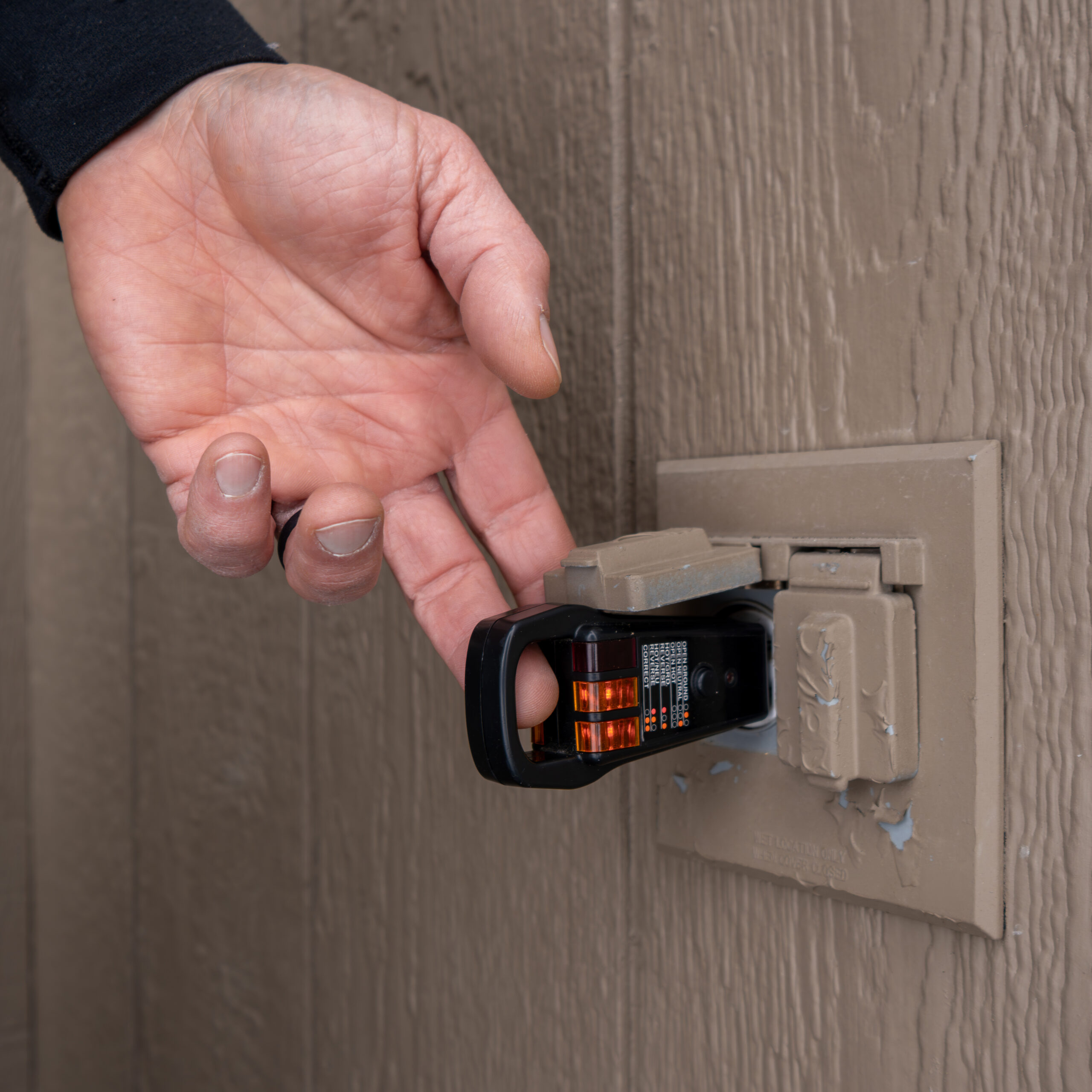
The Ultimate Guide to Residential Electrical Mapping
Understanding the intricacies of your home’s electrical system is vital for ensuring safety and efficiency. Residential electrical mapping, a comprehensive evaluation of an electrical system’s layout and functionality, stands as a cornerstone in achieving this understanding. In Wilmington, NC, and beyond, homeowners are recognizing the importance of this process. It not only enhances safety but also optimizes the functionality of electrical systems.
The concept of residential electrical mapping might seem daunting at first. However, it’s essentially about creating a detailed diagram of your home’s electrical circuits. This diagram helps in identifying the specific circuits that power different areas and appliances in your home. For residents in Wilmington and other cities, this knowledge can be a game-changer in managing electrical loads and preventing circuit overloads.
The benefits of residential electrical mapping extend beyond simple safety measures. It also plays a crucial role in energy conservation and cost reduction. By understanding the flow of electricity in your home, you can make informed decisions about energy usage. This not only contributes to a more sustainable lifestyle but also leads to significant savings on utility bills.
In conclusion, residential electrical mapping is an invaluable tool for homeowners. Whether you’re in Wilmington, NC, or any other city, taking the time to understand and implement this process can lead to a safer, more efficient, and cost-effective home. As we delve deeper into this guide, remember that the goal is to empower you with the knowledge to optimize your home’s electrical system for safety and functionality.
Understanding Residential Electrical Mapping
Understanding residential electrical mapping begins with recognizing its role in pinpointing potential issues before they escalate. This process, crucial for homeowners in Wilmington, NC, and elsewhere, involves a detailed examination of your home’s electrical system. By doing so, it identifies any outdated wiring or potential hazards that could lead to electrical fires or malfunctions. This preemptive approach not only safeguards your home but also ensures the wellbeing of its inhabitants.
The process of residential electrical mapping also greatly assists in planning renovations or additions to your home. When you know the exact layout of your electrical system, you can easily determine where new fixtures or appliances can be accommodated. This is especially beneficial in avoiding the costly mistake of overloading circuits. Moreover, it streamlines the integration of new electrical components, making renovations smoother and more efficient.
Another key benefit of residential electrical mapping lies in its ability to enhance emergency preparedness. With a clear map of your home’s electrical system, you can quickly identify main controls and circuit breakers in case of an emergency. This knowledge is invaluable in situations where power needs to be cut off promptly to prevent damage or danger. It essentially equips homeowners with the information needed to act swiftly and confidently during critical times.
Lastly, residential electrical mapping is a step towards smarter energy management. By understanding which circuits power different areas of your home, you can optimize electricity usage and reduce waste. This not only contributes to a more environmentally friendly lifestyle but also results in noticeable savings on energy bills. For residents of Wilmington and beyond, adopting this practice marks a move towards a more sustainable and cost-effective household.
The Importance of Accurate Electrical Diagrams
The importance of having accurate electrical diagrams cannot be overstated, especially when considering the safety and efficiency of your home’s electrical system. These diagrams serve as a blueprint, detailing every connection and circuit within your home. For homeowners in Wilmington, NC, this means having a clear guide to navigate the complexities of their electrical setup. Accurate diagrams make it easier to identify and address issues before they become serious problems.
One of the key benefits of residential electrical mapping is the ability to make informed decisions about upgrades or repairs. With a detailed electrical diagram, you can pinpoint exactly where changes need to be made without unnecessary guesswork. This precision not only saves time but also significantly reduces the risk of errors during the process. It ensures that every modification to your electrical system is done safely and correctly.
Furthermore, accurate electrical diagrams are essential for enhancing the value of your home. Potential buyers often seek homes that are well-maintained and safe. Having a comprehensive electrical map available demonstrates a commitment to these qualities. It shows that as a homeowner, you have taken proactive steps to ensure the electrical system is up to date and functioning efficiently.
Lastly, residential electrical mapping plays a crucial role in emergency situations. Knowing where all the critical points are, such as the main switch or circuit breakers, can make a significant difference in response times during an emergency. This knowledge allows homeowners and emergency responders to act quickly, potentially preventing damage and ensuring the safety of everyone involved. Therefore, investing in accurate electrical diagrams is not just about convenience, it’s a vital part of home safety and management.

Step-by-Step Guide to Residential Electrical Mapping
Embarking on residential electrical mapping starts with gathering essential tools and documents. You’ll need a copy of your home’s floor plan, a notepad, and a pencil for starters. This preparation enables a smooth transition into the mapping process, ensuring accuracy and efficiency. Residents of Wilmington, NC, find this initial step crucial for a successful mapping outcome.
Next, inspect and document every electrical outlet, switch, and fixture in your home. Mark their exact locations on your floor plan, noting the type of fixture or outlet at each point. This meticulous approach helps in creating a comprehensive map of your electrical system. It’s a step that underscores the importance of attention to detail in residential electrical mapping.
After documenting the visible components, it’s time to trace each circuit back to the breaker box. This might require a circuit tester and some patience, as you’ll need to determine which breaker controls each outlet or fixture. This phase is critical for understanding the flow of electricity in your home and identifying any potential overload issues. It’s a practice particularly beneficial for homes in areas like Wilmington, where electrical systems might be complex or aged.
Finally, compile all the information into a detailed electrical map. Include notes on the capacity of each circuit and any peculiarities you’ve discovered during your inspection. This final document serves as a valuable reference for any future electrical work or emergency situations. It ensures that homeowners have a clear understanding of their electrical system’s layout, promoting safety and efficiency in their homes.
Tools and Technologies for Effective Mapping
In today’s digital age, tools and technologies play a pivotal role in residential electrical mapping, enhancing accuracy and efficiency. Software applications designed for electrical mapping allow homeowners to visualize their electrical systems in great detail. These tools can automate the creation of electrical diagrams, making it easier for residents of Wilmington, NC, to maintain an up-to-date representation of their home’s electrical layout. This technological aid significantly reduces the time and effort required for manual mapping.
Moreover, advanced circuit tracers have become indispensable for accurately identifying circuit connections without disrupting the existing infrastructure. These devices can trace wires through walls and floors, pinpointing their exact path and endpoint. For homeowners, this means a less invasive process with minimal disturbance to the household. It’s an essential step in ensuring that the electrical map reflects the true configuration of the system, crucial for both safety and functionality.
Smartphone apps have also emerged as a handy resource in residential electrical mapping. With features that allow users to take photos and annotate them with electrical details, these apps offer a convenient way to compile and access information. They enable homeowners to quickly reference which outlets and fixtures are connected to specific circuits, a particularly useful feature during renovations or when troubleshooting electrical issues.
Finally, embracing these tools and technologies not only streamlines the process of residential electrical mapping but also enhances the overall safety of the electrical system. By leveraging software, circuit tracers, and smartphone apps, homeowners can achieve a comprehensive understanding of their electrical layout. This knowledge is instrumental in preventing overloads, planning future projects, and ensuring a safe living environment, marking a significant step forward in home management and safety practices.
How Residential Electrical Mapping Enhances Safety
Residential electrical mapping significantly enhances home safety by identifying potential hazards before they cause harm. In Wilmington, NC, this process is particularly valuable for detecting outdated wiring or overloaded circuits that could lead to electrical fires. By having a clear diagram of your home’s electrical system, you can swiftly address these risks. This proactive approach ensures the well-being of your household and protects your property from avoidable damage.
Moreover, residential electrical mapping aids in the precise placement of smoke detectors and other safety devices. Knowing the layout of your electrical system allows you to strategically install these devices where they are most effective. This is crucial in providing early warnings during an electrical malfunction, offering families more time to evacuate safely. It’s an essential step in creating a safer living environment for everyone.
The process also facilitates quick and accurate responses during power outages or emergencies. With a detailed electrical map, homeowners can easily locate and reset tripped circuit breakers or safely shut off power when necessary. This immediate access to critical controls can prevent minor issues from escalating into major emergencies. It empowers homeowners with the knowledge to act decisively and responsibly.
Lastly, residential electrical mapping promotes ongoing vigilance and maintenance, which are key to electrical safety. Regularly reviewing and updating your electrical map encourages the timely identification and correction of new hazards. It keeps safety measures up to date and enhances the overall resilience of your home’s electrical system. For residents, this means peace of mind knowing their homes are safeguarded against electrical risks.
Troubleshooting Common Electrical Issues with Mapping
Residential electrical mapping proves invaluable when troubleshooting common electrical issues in homes. This process allows homeowners to quickly identify the root cause of problems such as frequent power outages or flickering lights. In Wilmington, NC, utilizing a detailed electrical map can pinpoint overloaded circuits or faulty wiring that requires immediate attention. It transforms a complex task into a manageable one, ensuring a safer and more efficient electrical system.
With the aid of residential electrical mapping, diagnosing issues becomes a straightforward process. For instance, if certain appliances cause the breaker to trip, the map helps trace which circuit is affected. This clarity saves time and reduces the guesswork often involved in electrical troubleshooting. It’s a practical approach that enhances the troubleshooting process, making it more accurate and less invasive.
Another benefit of residential electrical mapping is its role in guiding repairs and upgrades. By understanding the electrical layout, homeowners can make informed decisions about where and how to make improvements. This is especially useful in older homes in cities like Wilmington, where updating the electrical system is often necessary. The map acts as a blueprint, ensuring that any changes made are both safe and effective.
Finally, residential electrical mapping is an essential tool for ongoing electrical maintenance. It encourages regular reviews of the electrical system, helping to catch and resolve minor issues before they escalate. This preventative approach not only prolongs the life of the electrical system but also contributes to the overall safety of the home. It’s a proactive measure that every homeowner should consider adopting.
The Role of Professionals in Residential Electrical Mapping
While residential electrical mapping is an achievable task for many homeowners, enlisting the help of professionals can elevate the accuracy and safety of the process. Experts in the field come equipped with the knowledge and tools necessary to conduct thorough inspections and create detailed maps. This professional insight is particularly beneficial in Wilmington, NC, where diverse home styles and ages may present unique electrical challenges. By relying on professionals, homeowners ensure that their electrical mapping is as comprehensive and precise as possible.
Professionals in residential electrical mapping also bring a critical eye for identifying potential hazards that might not be obvious to the untrained observer. Their experience allows them to spot issues like outdated wiring or potential fire risks, ensuring that the electrical system adheres to current safety standards. This level of scrutiny is invaluable in preventing future problems and safeguarding the home against electrical mishaps. It’s a proactive approach that significantly enhances the safety and functionality of a home’s electrical system.
Another advantage of professional involvement in residential electrical mapping is their ability to offer tailored advice for optimizing the home’s electrical layout. They can suggest practical solutions for balancing loads, improving energy efficiency, and planning for future expansions or renovations. This personalized guidance is especially useful in cities like Wilmington, where homeowners might be considering upgrades to accommodate modern electrical demands. Professionals help translate the technical details of an electrical map into actionable insights for the homeowner.
Lastly, hiring professionals for residential electrical mapping can be a cost-effective decision in the long run. By identifying and addressing issues early on, they help avoid costly repairs and emergency call-outs. Their expertise ensures that any investments in the electrical system are made wisely, avoiding unnecessary expenditures on ineffective solutions. For homeowners, the peace of mind and potential savings make professional electrical mapping a smart choice for maintaining a safe and efficient home.
Tips for Maintaining Your Home’s Electrical Map
After understanding the importance of residential electrical mapping and possibly enlisting professional help, maintaining your home’s electrical map becomes the next crucial step. Regular updates ensure the map accurately reflects any changes or upgrades to your home’s electrical system. This is especially important after completing renovations or adding new appliances, as these can alter the electrical load and distribution. Keeping your map current helps avoid potential overloads and ensures efficient energy use.
Incorporating new technology into your home’s electrical system can also necessitate updates to your electrical map. As smart home devices and energy-efficient appliances become more common, they introduce new dynamics to how electricity is consumed and distributed. By updating your map, you ensure that it accurately represents the current state of your electrical system, allowing for safer and more effective management of your home’s energy consumption.
Another tip for maintaining your electrical map involves conducting annual reviews of your electrical system. This doesn’t just mean checking the map itself but also physically inspecting your home’s electrical outlets, switches, and fixtures for signs of wear or damage. In cities like Wilmington, NC, where the environment can affect home maintenance, this annual check-up can catch potential issues before they escalate, ensuring your map remains a reliable tool for managing your home’s electrical safety and efficiency.
Lastly, sharing your updated electrical map with family members is a wise practice. It educates everyone in the household about the electrical system’s layout, making it easier to locate circuit breakers or shut off power in an emergency. This shared knowledge not only enhances safety but also fosters a collective responsibility towards energy conservation and efficiency, making residential electrical mapping a cornerstone of smart homeownership.

Frequently Asked Questions
What is residential electrical mapping?
Residential electrical mapping is a detailed process of charting out your home’s electrical system. It identifies where circuits and outlets are throughout your house. This map helps ensure safety and improves the efficiency of electrical use. By understanding your home’s electrical layout, you can prevent overloads and enhance functionality.
How often should it be updated?
Updating your residential electrical mapping should be done every few years. This ensures it matches any changes or renovations in your home. It’s also wise to review the map if you’re adding new appliances. Keeping the map current helps maintain safety and efficiency in your electrical system.
Why is residential electrical mapping important?
Residential electrical mapping plays a crucial role in ensuring your home’s safety and functionality. It helps avoid potential hazards by identifying overloaded circuits before they cause problems. This process also makes troubleshooting electrical issues faster and more efficient. By keeping your electrical system organized, it enhances the overall performance and safety of your home’s electrical setup.
Can I do my own electrical mapping?
You can tackle residential electrical mapping on your own, but it requires care. Knowing your home’s layout and electrical system is essential. However, for accuracy and safety, professional help is often best. Experts like those at Mister Sparky ensure your map is precise and reliable.
What tools are needed for mapping?
For residential electrical mapping, a few essential tools are needed. A circuit tracer helps identify circuits and connections within your home. You’ll also need a digital multimeter to measure voltage and ensure safety. A detailed floor plan of your home aids in accurately plotting out electrical outlets and switches. Lastly, labeling materials like stickers or tags are crucial for marking circuits clearly.

